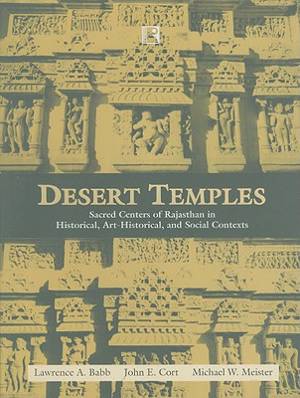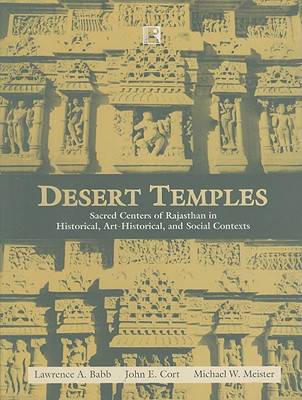
- Afhalen na 1 uur in een winkel met voorraad
- Gratis thuislevering in België vanaf € 30
- Ruim aanbod met 7 miljoen producten
- Afhalen na 1 uur in een winkel met voorraad
- Gratis thuislevering in België vanaf € 30
- Ruim aanbod met 7 miljoen producten
Zoeken
Desert Temples
Sacred Centers of Rajasthan in Historical, Art-Historical, and Social Contexts
Lawrence A Babb, John E Cort, Michael W Meister
Hardcover | Engels
€ 84,95
+ 169 punten
Omschrijving
The essays in this book represent the fruits of an interdisciplinary study of four temples in Rajasthan, India, jointly conducted by Lawrence A. Babb (anthropology), John E. Cort (religious studies), and Michael W. Meister (art history). The temples were chosen because they are quite ancient yet are also vibrantly functioning today. The results of the authors' research dramatically vindicate the idea that when disciplines are combined, the result is greater than the sum of the parts. The book shows that a functioning temple is many things at once. More than a mere physical structure, a temple is a center of economic activity, a focal point for political power, and a confluence of social relationships of every conceivable sort. It is also an object of aesthetic contemplation and judgment. And perhaps above all, a temple is a locus of sacred power that evokes deeply felt responses in those who worship there. Desert Temples weaves these many threads together in a volume unique in the extent to which it stresses the holistic approach to the study of India's sacred centers.
Specificaties
Betrokkenen
- Auteur(s):
- Uitgeverij:
Inhoud
- Aantal bladzijden:
- 208
- Taal:
- Engels
Eigenschappen
- Productcode (EAN):
- 9788131601068
- Verschijningsdatum:
- 1/04/2008
- Uitvoering:
- Hardcover
- Formaat:
- Ongenaaid / garenloos gebonden
- Afmetingen:
- 185 mm x 244 mm
- Gewicht:
- 680 g

Alleen bij Standaard Boekhandel
+ 169 punten op je klantenkaart van Standaard Boekhandel
Beoordelingen
We publiceren alleen reviews die voldoen aan de voorwaarden voor reviews. Bekijk onze voorwaarden voor reviews.











